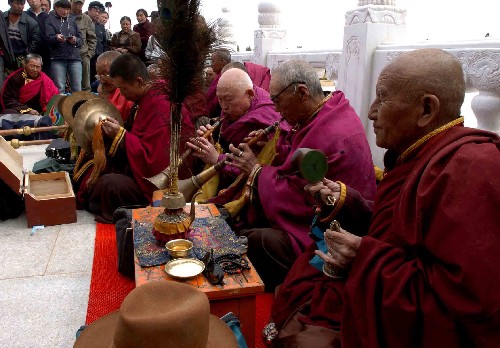| |

As a gathering place for later generations to offer sacrifice to the spirit of Genghis Khan, a hero in Mongolian history, Genghis Khan's Mausoleum is located in Ejin Horo Banner, Ordos, Inner Mongolia, where a unique traditional sacrifice ceremony forGenghis Khan is held regularly. Died in 1227, Genghis Khan was buried secretly in accordance with local customs prevailing at that time. To commemorate their most famous leader, the Mongolians builtthe Genghis Khan's Mausoleum on Northern Desert Plateuathat consists of "eight white palaces"(eight movable white Mongolian yurts) where there was a coffin in which relics of GenghisKhan were placed.
Sacrifice ceremony for Genghis khan is held mainly for expressing Mongolian's worship of Mongke Tengri, their ancestors and heroes. In the ceremony, sacrifices held by ancient Mongolians in the forms of offering cattle, sacred fire, milk, wine or songs are recreated, and vast numbers of precious sacrifice wares with distinctive features well embody aesthetic views heldby the nomadic people on the grasslandtowards the nature and animals.
Sacrifice ceremony for Genghis khan reflects Mongolian's deep affections for their nationality and serves as a witness to the continuousness of Mongolian culture. Well protecting the ceremony is of great significance to the uniqueness of Mongolian culture.
|
|
